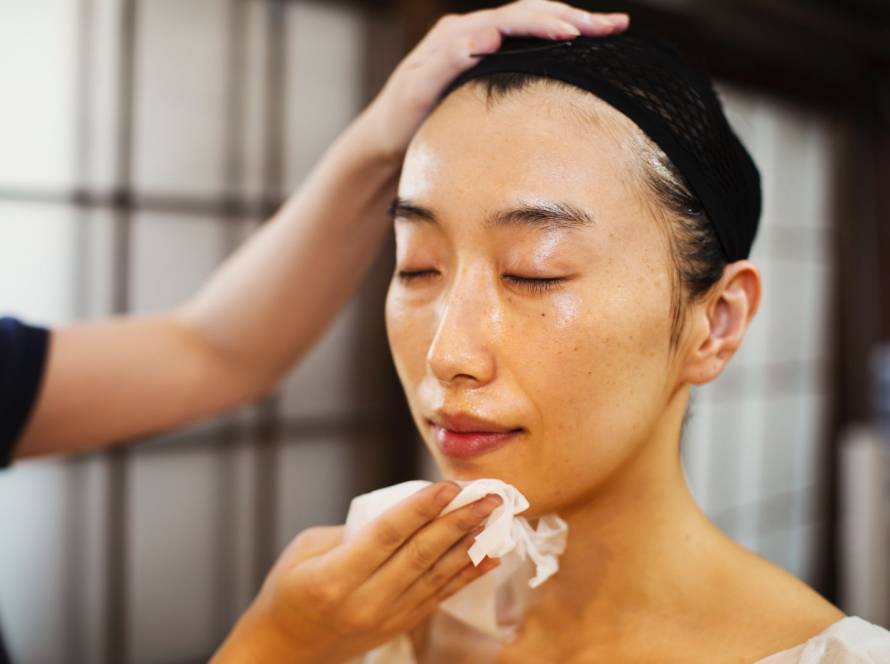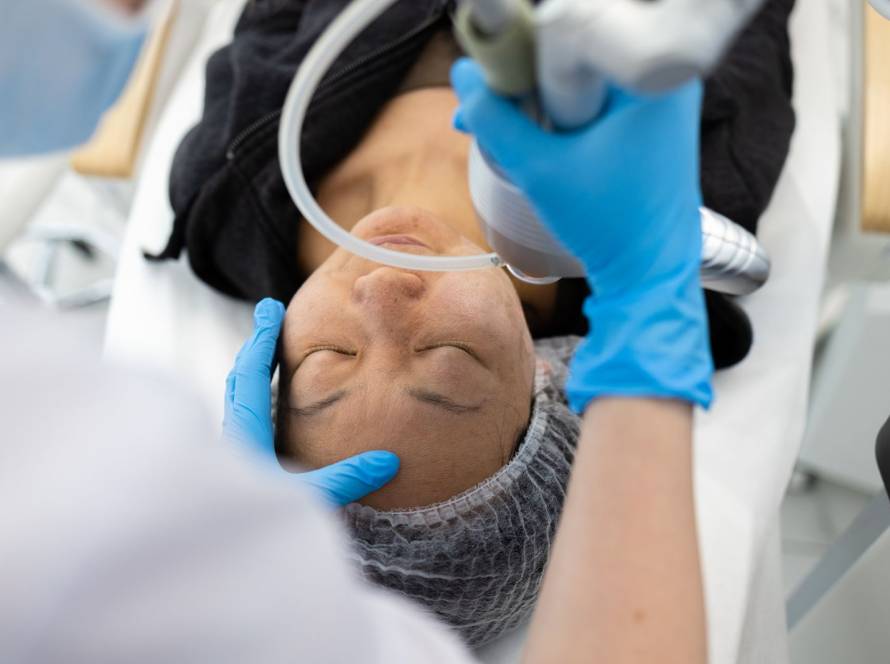Guasha may cause redness and petechiae (small, red spots caused by bleeding under the skin) due to the increased blood flow and microcirculation. However, it’s not intended to cause bruising. If bruising occurs, it may be a sign that the technique is being applied too aggressively.. While this is normal and expected to some extent, individuals with very sensitive skin may find the appearance of redness or bruising uncomfortable, even if it’s not painful.
The face has more sensitive areas, such as around the eyes or over bony prominences, which may be more prone to discomfort during the scraping process.
Individuals with certain skin conditions, such as acne, sunburn, or active rashes, may experience discomfort during a Gua Sha facial. In such cases, it’s essential to communicate any concerns with the practitioner beforehand.
To minimize discomfort and ensure a positive experience:
1- Communicate openly with the practitioner about your comfort level and any concerns you may have.
2- Choose a skilled and experienced practitioner who understands facial Gua Sha techniques.
3- If you have particularly sensitive skin or any skin conditions, inform the practitioner before the session.
4- After the session, practitioners often apply soothing skincare products to help calm the skin.
It’s important to note that while many people find Gua Sha facials enjoyable and beneficial, individual preferences and reactions can vary. If you’re unsure about trying Gua Sha or have specific health concerns, it’s advisable to consult with a healthcare professional or dermatologist before undergoing the treatment.
Here’s a basic overview of the process:
Tool: Practitioners typically use a smooth-edged instrument made of jade, horn, or other materials. Modern versions may also be made of plastic or other materials.
Gua Sha tools come in various shapes and materials, and they are used in traditional Chinese medicine for scraping therapy to promote blood circulation and release tension. The most popular ones are:
Jade or Rose Quartz Tools: These are often flat, smooth stones made of jade or rose quartz. They are cool to the touch and are believed to have energetic properties. The smooth surface is gentle on the skin and helps with the gliding motion during Gua Sha.
Buffalo Horn Tools: These tools are made from water buffalo horn and can have a curved or straight edge. The curved edge is often used for larger areas like the back, while the straight edge may be used on smaller areas like the face.
Regardless of the material, the key is that the edge of the tool should be smooth to avoid causing harm to the skin. The tools are used to gently scrape the skin, and the pressure applied depends on the area being treated and the comfort level of the individual.
If you are considering using a Gua Sha tool, it’s important to choose one that feels comfortable in your hand and on your skin. Additionally, it’s recommended to learn proper techniques from a trained practitioner to ensure you use the tool safely and effectively. Always communicate with a healthcare professional if you have any concerns or pre-existing skin conditions before using Gua Sha tools.
Regenerate:
Application: The practitioner applies oil or another lubricant to the patient’s skin and then uses the tool to scrape the skin in a downward motion. The scraping is usually done on the back, neck, shoulders, and limbs.
Technique: The scraping is performed with a moderate amount of pressure, and the practitioner aims to create redness (petechiae) on the skin’s surface. The redness is thought to be a sign of increased blood flow and the removal of stagnant energy or “qi.”
Increased Blood Flow: The scraping motion is thought to stimulate blood circulation in the treated areas. Improved circulation is considered beneficial for general health and is believed to help the body in its natural healing processes.
Stagnant Qi Removal: TCM posits that disruptions or blockages in the flow of qi can lead to various health issues. Gua Sha is believed to help remove these blockages and restore the proper flow of qi, promoting balance and harmony in the body.
Benefits: Proponents of Gua Sha claim that it can help alleviate various health issues, including muscle pain, inflammation, and respiratory conditions. It’s also believed to promote overall well-being by balancing the body’s energy flow.
Gua Sha can be done frequently, although there are a few factors to consider. “The frequency of Gua Sha depends on how firmly the tool is used.”
The deeper and stronger that the pressure is of the scraping motions applied, the more visible the appearance of red marks, which take several days to resolve. Therefore, firm Gua Sha can be applied weekly.
If you are considering Guasha therapy, it’s advisable to consult with a trained and experienced practitioner who can adjust the technique based on your individual needs and tolerance. Always communicate your comfort level and any concerns you may have during the session to ensure a safe and effective experience.




